Cape to Cairo Journey:
Pages to Explore:
Blog Catagories:
Photo of the day








Home | About Us | Safaris & Photographic Trips | Blog | Contact Us | Sitemap | Disclaimer
The Essence of the Journey!
We would like to do this trip to experience new cultures.
We would like to understand what makes African people pure.
What are their spiritual beliefs, understandings?
How does the spiritual world we know exist to them?
What can we learn from them?

Oct 6 12
World of Ancients & Mystics
Addis Ababa ‚Äì The New Flower¬Ý¬Ý¬Ý
¬ÝBy: Celeste
¬ÝNorthwards ho, we leave behind Bale and drive through Shashemane, the Rift Valley Lakes: Shala, Abiato to the west; Langano, Ziway to the east ‚Äì formed during the last ice age. Expectations and experiences thus far have been mixed in Ethiopia with the smiles and wacky sense of humour contrasting with the huge population and lack of open spaces or privacy. At Ziway whilst Marcelo was banking and purchasing bread and¬Ýdrinks we were in the midst of what had been described to us by previous travelers.  Children, selling a range of items, quickly surrounded the vehicle, tapping and then insistently banging on the windows and attempting to open the doors. They sat on the bull bar and tried to pry the motor of the winch free ‚Äì all under the two bank guards‚Äô indifferent gaze. ¬Ý
Children, selling a range of items, quickly surrounded the vehicle, tapping and then insistently banging on the windows and attempting to open the doors. They sat on the bull bar and tried to pry the motor of the winch free ‚Äì all under the two bank guards‚Äô indifferent gaze. ¬Ý
We have some difficulty finding Wim‚Äôs Holland House, a well-known overlanding and traveler‚Äôs spot. A little spot it is, lying as it does next to the railway station. Dutch Wim and his Ethiopian wife opened their last room for us as most have been reclaimed by the government in order to rebuild the railway station area. So as the only guests we did not achieve the traveler‚Äôs interaction we had hoped for.¬Ý Whilst the children played with the dogs and puppies, Marcelo and I, somewhat morbidly, sat and watched the horrors of US embassy attacks and flag burning in Cairo and Khartoum over an anti-Islam video released over the internet. Our next two destinations. What to do?
Fortunately this cloying gloom seemed to belong to the dirty, disheveled city and lifted as we departed north-eastwards.
Lalibela ‚Äì Kings, Angels and Legends ¬Ý¬Ý
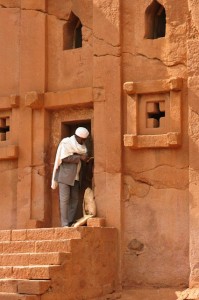 I was primed with anticipation having seen television documentaries on the history, culture and religion of Ethiopia. The terrain was remarkable: high, seemingly impenetrable mountains on the windiest roads ever; hairpin bends pushing Charlie on the dashboard into a spin. On a photo stop, an old, old man walks by like something out of the weird desert-world in Star Wars, barefoot, trunk covered in skins, a stick slung over his shoulder.
I was primed with anticipation having seen television documentaries on the history, culture and religion of Ethiopia. The terrain was remarkable: high, seemingly impenetrable mountains on the windiest roads ever; hairpin bends pushing Charlie on the dashboard into a spin. On a photo stop, an old, old man walks by like something out of the weird desert-world in Star Wars, barefoot, trunk covered in skins, a stick slung over his shoulder.
At the summit of somewhere we take Charlie’s advice and turn off tar onto gravel. A smiling pre-teen offers his version: sand this way 80m, tar this way – double.
Slow but beautiful, villages blending then petering out as the darkness was pierced with insects. Weaving in between valleys and rivers, hares bounding, frogs croaking. A young couple walk with a single suitcase. Where could they be going? We weary on in crawl mode. The air is thick and wholesome. Cobblestones mark our entry into Lalibela – a mystical, musical name. All is quiet and sleeping.
Lalibela has always been a place of pilgrimage throughout the centuries. Our undertaking thus far to this wondrous, pulsating place was one and the same. We walked amidst living faith. Crouched on their haunches or perched on the hilltops like living shrouds. “Why are there so many people dying?” Danica asked, watching the funeral processions and weeping. Likened to Jerusalem on which the area was modeled, there was the River Jordan with a cross representing the place where Christ was baptized;
the Mount of Olives and near the Tomb of Adam seven olive trees were once transplanted here from Jerusalem.¬Ý The churches are immense and solid, chiseled into the ground-rock so as to be hidden from enemies‚Äô view.¬Ý The nuns in the courtyards dry the donated wheat from which they make the holy hosts in bake-houses or ‚ÄòBethlehem.‚Äô Blessings are bestowed by bowing and kissing the ceremonial cross in a kiss-bow; kiss-bow; kiss-bow sequence.¬Ý Each church has its own ceremonial cross, the most celebrated of which is the 7kg solid gold Lalibela cross itself. This 800-year-old antiquity was discovered to be missing in 1997. It was found stashed in an art dealer‚Äôs luggage two years later and returned to its rightful place.
 Enter with shoe-less feet only. Chanting rooms hold old drums representing the Old and New Testaments and cistrums (wood and metal shakers) said to have been introduced by St. Jared with their holy songbook. Worshippers must stand for the entire service in the central prayer room, leaning on their prayer sticks. Then there is the Holy Sanctuary for priests only, hidden by curtains, said to contain replicas of the tabot – Tablets on which the Ten Commandments are inscribed, The Most Holy of Holies : The Word of God received by Moses.
Enter with shoe-less feet only. Chanting rooms hold old drums representing the Old and New Testaments and cistrums (wood and metal shakers) said to have been introduced by St. Jared with their holy songbook. Worshippers must stand for the entire service in the central prayer room, leaning on their prayer sticks. Then there is the Holy Sanctuary for priests only, hidden by curtains, said to contain replicas of the tabot – Tablets on which the Ten Commandments are inscribed, The Most Holy of Holies : The Word of God received by Moses.
Mary and the Archangels and Saints Gabriel, Rafael and Michael are the favourites along with St. George on his white steed overcoming a dragon. The 13th church is a massive monolithic Greek Cross, Bet Giyorgis, where his hoof prints are imprinted in the entrance tunnel. Many myths, many legends – fascinating and enchanting.
Tigrai – Rock-Hewn Wonders
Dotted into the cliffs and most difficult-to-get-to-places all around the region. Incredible to ponder on the removal of each single chisel flake. From The Tigrai Tourist Commission office situated at Axum Hotel in Mekele we took a young and knowledgeable guide, Tewelde, with us and were so glad we did. It took the entire day to drive to and locate just three churches. From indifferent, to plain old obstructive, to inviting, we were admitted by each priest into their churches. Martyrs were more commonly depicted here, with a disturbing story of a 3-year-old burnt to death for his beliefs, saved by Gabriel at the Church of Wukro Chirkos.
The 14thcentury church of Abuna Abraham or Debre Tsion was the most fun, taking about an hour to climb up the mountain, steep, slippery stairs, higher and higher, valleys getting smaller and smaller below. Into the cavernous, dark interior we entered. The ticklishness is not religiously inspired ecstasy; just fleas underfoot – soon forgotten by glancing upwards at the ribbon-interlaced crosses in different styles in viridian green.
The frescoe over the doorway is of Abuna Abraham holding a cross, green cloak, brown cowl, square-cut black beard, holding a cross with his ‚Äòservant‚Äô, an oversized lion in brown with his mane in grey carrying four water containers on his back for his ‚Äòmaster‚Äô, walking together through the countryside. The text reads: ‚ÄúAbuna Abraham his servant, the lion, who carries pots of water on his back for his master.‚Äù Such harmonious behavior between man and beast was the goal of anchorite life abd was prophesied in Isiah II: 6-9: ‚ÄúThe wolf will live with the lamb‚Ķ‚Äù ¬Ý
The nun offered (not to be refused despite the old tin cans and concerns regarding cleanliness) us a taste of tella- a local beer-brew made from sorghum. In my humble view, it is best regarded as one of those things to try once, and once only.
Back down in the valley the enthusiastic priest allowed us to view the wood and goatskin-parchment 15th century ceremonial fan, 1m in diameter with 34 individual panels each painted with a figure of a saint. ¬Ý
In Hawzien we stayed at the beautiful Italian Gheralta Lodge with panoramic views and rooms built in the traditional Tigraian style – flat-roofed, stone hudmos. And guess who we met there? Carol, whom we had previously met at Fat Monkey on Lake Malawi! A delightful reunion but none more joyous than Danica.
The children created lovely cards and presents for her and they played Scrabble together. We were treated to an extra night at the lodge out of the kindness of Carol’s heart. Thank you, our special friend. The friends with whom she was traveling were wonderful company, world-renowned artist, WWF board member and international award-winning architect, Peter Rich of Mapungubwe fame. It was a great pleasure meeting you all. A sunset scramble revealed stone steps, rock hyraxes, an old game of hollows carved into the stone and Italian soldier’s graves under the massive fig trees.
Axum – Ancient Empire
It is a disappointment, this sad, dusty, dejected town that bears no resemblance to its former glory as a centre of major trade and power, with technologically ‚Äòadvanced‚Äô and literate populace of 1st century BC to the 7th century AD. However, the stelae field is impressive with the largest, still standing, granite block standing 23m high, slightly tilted, attributed to King Ezana of the 4thcentury. It is carved with a false door and nine windows. It was supposedly transported from a site 4km away, possibly by elephants, humans and rollers. Of course there is the alternative tradition that it was the work of the Holy Ark of Covenant, said to be housed right here in Axum in a sanctified building behind the Cathedral of Tsion Maryam, though, of course, no-one has ever actually seen it. Ezana was the first Christian ruler of Ethiopia, his stele reflecting his power and importance. He was the conqueror of Yemen and parts of Sudan, after all.¬Ý
The 3rd century King Remhai’s stele was 33m but its huge 500 ton weight and poor anchorage rendered it to the floor. Vaults, mausoleums, tombs, treasure, the Queen of Sheba’s swimming pool – it is certainly the stuff of legends. An empty tomb of said to be that of King Basen, ruler of Axum at the time of Christ’s birth. What was wonderful to see with my own eyes (o, ye of little faith!) was the original stone tablet inscribed in Sabaen, Ge’ez (holy language of the priests) and Greek – its significance akin to the Rosetta Stone.
A few choice phrases, over-used by our guide, but now used frequently by the de Freitas clan bear mentioning: “Spectacular. Wondrous. Because why? I’ll tell you why…” It is the mystery and wonder that speaks most powerfully.




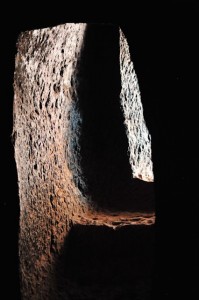
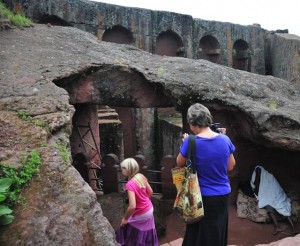

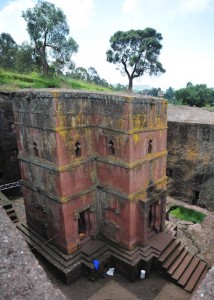
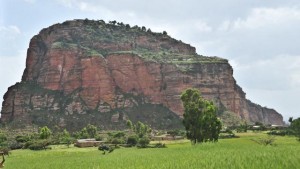
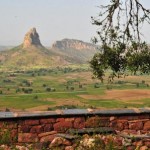




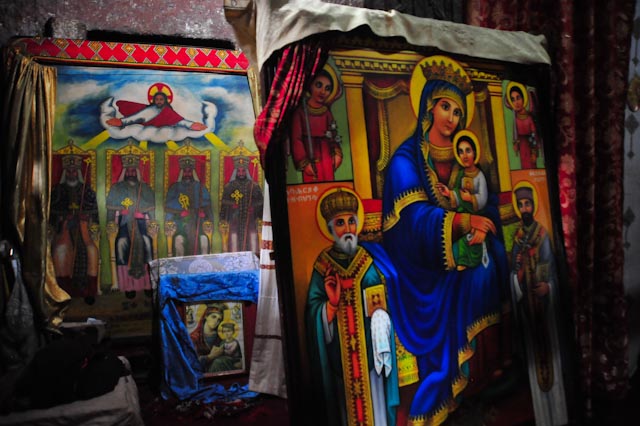


Glad you you are enjoying the donkeys Cel! Hope you are also enjoying the religious craziness. Did you go to the museum in Addis and see Lucy? Are you going to the simien mountains? well worth it…What are next plans? Me is curious!
Hello marcello and clan, this part is definatley more cultural than nature related. I am sure it comes as a pleasant change , but not a change on the focus of the journey. Again celeste good to see you at the helm of the blog. Love to you all.
Hi Collin, yep I prefer the live things, but Cel enjoys what has been.
Hi Guys. Interesting part of the world!
Hi All, looks like you are still enjoying the trip with even more adventurous countries and sites to see. Ethiopia lists as one of my favourite and I find the blend of culture, religion and pure histroy fascinating there. I am also pleased to see you spotted a Rougets Rail. To date I am the only person I know on this side of the planet (small circle of friends I know) that has spotted one. Aparently fairly rare, so I was told…
Your trip has most certainly been a great educational odyssey and in particular an expereince your children will most certainly cherish for the rest of their lives. I wish most families could have the opportunity to see Africa’s greatness and i guess low points too. It gives us a good perspective of how fortunate we are in life.
On that note I bid you all a safe journey whereever you may be in Africa right now and we will chat soon.
Mike, Iva & the Girls.
Hi Mike, Ethiopia does test the driving skills, the roads are not too bad, but the living obstructions !! Interesting how the ‘herd’ boys just let their goats, donkeys, cows, sheep go when they hear a vehicle approaching. They just mingle in the passing crowds as one drives past and look on with the look of disownership. It really messes with the travelling time, and one does well to average 50km/h on these roads.. Love to the familia